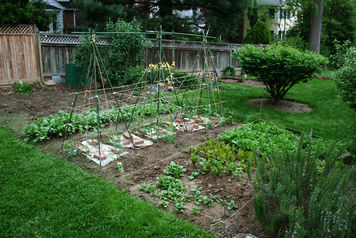 The term crop rotation seems like a daunting concept and something that only farmers need to think about. Well I have news for you— if you’re planting things in your yard then that makes you a yard farmer, and crop rotation is something you need to think about if you want a healthy yard! So let’s break down the basics of crop rotation together. First off, what is crop rotation? Simply put, it's planting your tomatoes in a different spot than you did last year. You are rotating the placement of your crops throughout your garden from year to year. Why rotate crops in my garden? By rotating where you place each type of plant, this reduces pathogens and pests in your soil. If a certain pest likes tomatoes, and you plant tomatoes in the exact same spot year after year, eventually that pest will set up shop because you’ve created a consistent place for it to live and thrive. Moving plants around also improves soil structure and nutrient levels. For instance, if you put peppers in the exact same spot year after year, the peppers will eventually drain your soil of the very nutrients they need to live. In a nutshell by rotating where you plant things, you will deal with less pests and diseases and have healthier soil. How do I rotate the crops in my garden? Simple: note what you planted where this year, so that next year you can move things around. Draw a picture of your garden before this season is done, so when you go to plant next spring, you won’t have to guess. It’s helpful to note which biological family each plant belongs to since members of the same family are susceptible to the same pests and diseases. From there, design your garden based on these guidelines:
Finally, not sure how to shake things up? Good Sweet Earth offers a personalized Garden Pro Service. Click here to learn more. As always happy gardening!
0 Comments
Your comment will be posted after it is approved.
Leave a Reply. |
